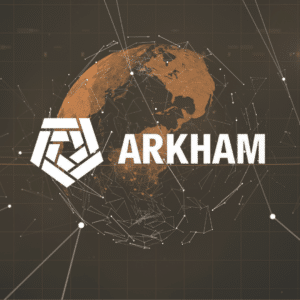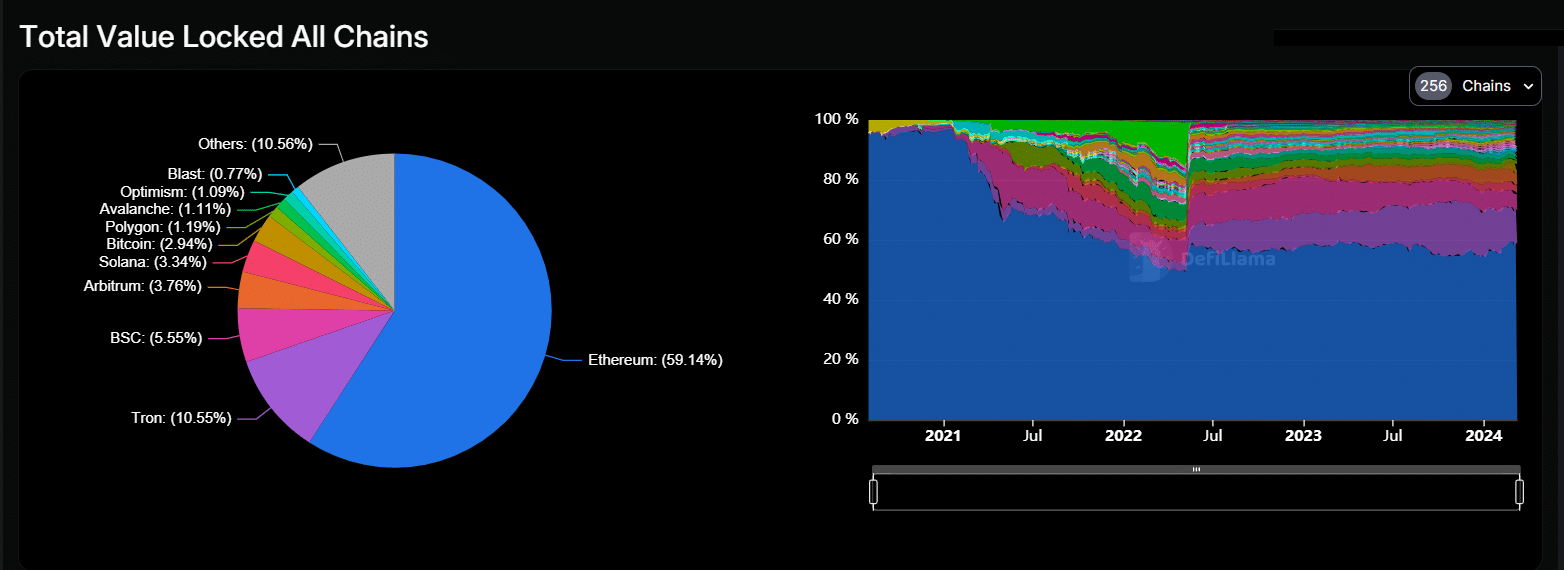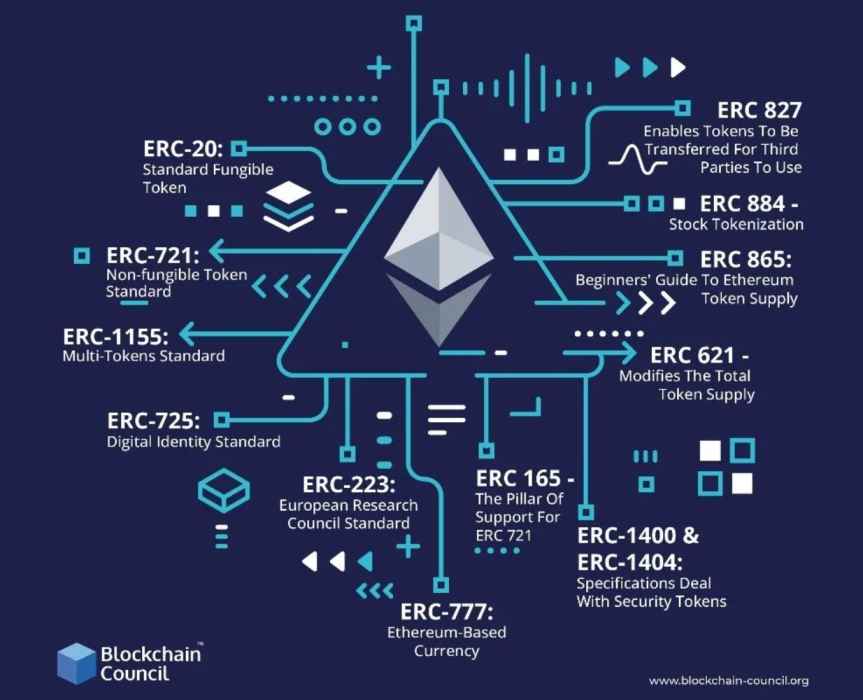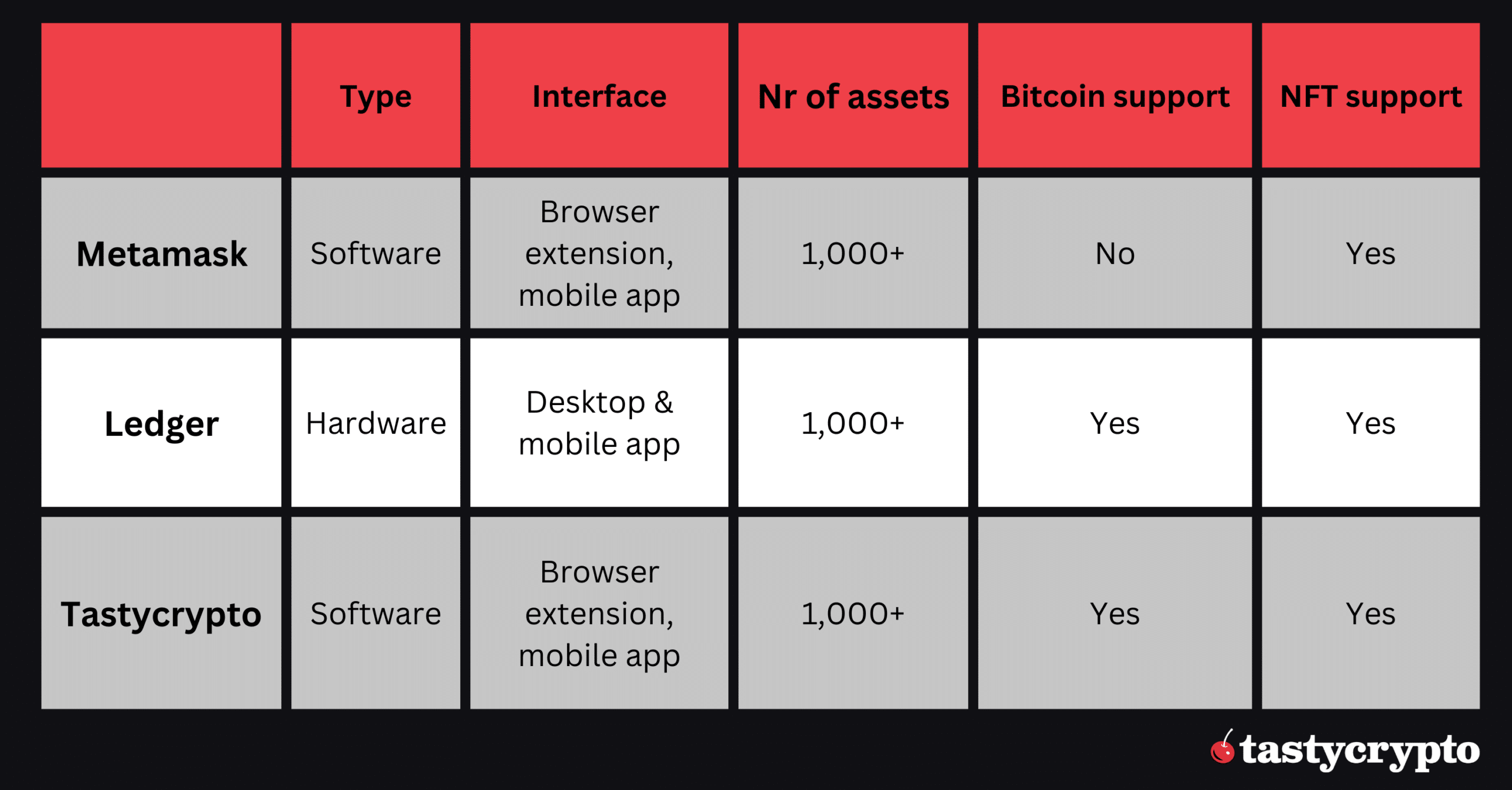An ERC20 wallet is either a software or hardware tool for managing Ethereum-based tokens, facilitating transactions, and engaging with decentralized applications on the Ethereum network.
Written by: Anatol Antonovici | Updated March 15, 2024
Reviewed by: Mike Martin
Fact checked by: Ryan Grace

An ERC-20 wallet stores Ethereum and ERC-20 tokens. This article explains how these wallets work and what they are used for.
Table of Contents
🍒 tasty takeaways
ERC-20 wallets can store ERC-20 tokens and enable users to send and receive tokens by interacting with other Ethereum addresses.
Non-custodial ERC-20 wallets give users full control over their digital currencies by storing private keys offline or on user devices.
tastycrypto is an ERC-20 wallet offering a user-friendly experience and multiple features.
Summary
| Feature | Description |
|---|---|
| ERC-20 Wallet Definition | A digital tool for managing Ethereum-based tokens, enabling transactions and dApp engagement. |
| Functionality | Stores, sends, and receives Ethereum and ERC-20 tokens; interacts with Ethereum addresses. |
| Types of Wallets | Includes custodial and non-custodial wallets, the latter gives users full control over private keys. |
| Popular ERC-20 Wallets | tastycrypto, MetaMask, Ledger. tastycrypto offers a user-friendly experience with multiple features. |
| ERC-20 Standard | A set of rules for creating fungible tokens on Ethereum. Supports tokens like LINK, MATIC, AAVE. |
What is a Digital Wallet in Crypto?

A digital wallet is a software application or hardware device that stores a cryptocurrency’s private keys, letting users send, receive, and spend the cryptocurrency they hold.
Many wallets provide an intuitive interface for tracking balances and include features for conducting technical and fundamental analysis, staking, and swapping tokens directly within the app.
Some digital wallets focus on specific blockchain ecosystems, while others can host thousands of digital assets across multiple chains.
Types of Digital Crypto Wallets
There are two types of wallets that you should know about:
- Custodial wallets are offered by third-party services that hold crypto on your behalf. Think about centralized exchanges like Binance or Coinbase.
- Non-custodial or self-custody wallets give you full control by storing the private keys.
Non-custodial crypto wallets go by many names. Some include:
What Is an ERC-20 Wallet?
An ERC-20 wallet is a type of cryptocurrency wallet designed to hold Ethereum (ETH) and any tokens built on its platform, known as ERC20 tokens.
🍒 Coin vs Token: How They Differ
These wallets offer users a convenient means to track balances of Ethereum-based tokens, trade them, and engage with decentralized applications (dApps) developed on the Ethereum platform.
Today, Ethereum accounts for almost 60% of the decentralized finance (DeFi) sector, attracting over $56 billion worth of crypto on DeFi apps built on top of the blockchain.
Source: DeFiLlama
What Is the ERC-20 Standard?
ERC-20 stands for Ethereum Request for Comment Number 20, representing a set of rules for building fungible tokens on the Ethereum network.
Unlike Bitcoin, the Ethereum blockchain offers a smart contract feature, which supports the creation of tokens and dapps on top of it.
🍒 Smart Contracts for Beginners
Ethereum has other standards in addition to ERC-20. For example, the ERC-721 standard is used for creating non-fungible tokens (NFTs), while ERC1400 is the blueprint for creating security tokens.
Source: Blockchain Council
ERC-20 accounts for the lion’s share of all Ethereum-based tokens. Some popular tokens that use this standard include Chainlink (LINK), Polygon (MATIC), Aave (AAVE), Uniswap (UNI), and stablecoins like DAI, USDT, and USDC.
These tokens have an aggregate value of over $405 billion as of mid-March, with USDT accounting for 25%.
How Does an ERC-20 Wallet Work?
Hot wallets provided by centralized exchanges can support many ERC-20 tokens with significant market value. However, the term “ERC-20 wallets” typically refers to non-custodial wallets. These wallets grant users complete control over their assets by allowing them to hold their private keys.
Unlike online custodial wallets, self-custody wallets do not require KYC (Know Your Customer) verification. Most Ethereum wallets are software-based, including browser extensions, mobile apps, and desktop applications
Address Generation
When a user downloads an ERC-20 wallet, it generates an address via a cryptographic process, which starts with the creation of a private key. In total, it creates three types of addresses:
- Private key – this is the secret key that is generated through random numbers.
- Public key – next, the wallet generates a public key that is mathematically derived from the private key.
- Ethereum address – finally, the Ethereum address is generated from the public key (by taking the Keccak-256 hash of it). You can share it with anyone to receive ERC-20 tokens.
Each Ethereum address represents a string of 40 characters, which mixes numbers and letters. Each string starts with 0x.
Here is an example of an ERC-20 wallet address (my address):
0x99E1e692E662e6057457Cc5e049910F8b322e09d
When a user initiates a transaction, such as sending an ERC-20 token, the wallet requires him to confirm the details and then securely signs the transaction with the user’s private keys.
What Can You Do with an ERC-20 Wallet?
With an ERC-20 wallet, you have to ability to:
- Secure storage for Ethereum tokens: Securely store Ethereum and ERC-20 tokens. After installing, ensure to copy and securely keep the seed phrase for potential wallet recovery needs.
- Facilitate ERC-20 transactions: Easily send and receive Ethereum tokens.
- Gateway to DeFi and Web3 ecosystems: Use an ERC-20 wallet to access and interact with decentralized applications (dApps) built on Ethereum, such as connecting to a decentralized exchange (DEX) for token swapping.
- Engage in token launches: Participate in token sales to become an early investor in Ethereum-based projects. Make sure to read their whitepaper!
- Influence through governance: Holding governance tokens that adhere to the ERC-20 standard grants you voting rights in the corresponding Decentralized Autonomous Organizations (DAOs).
Examples of ERC-20 Wallets
Many digital wallets are designed specifically for the Ethereum ecosystem, while others support multiple blockchain networks and are compatible with ERC-20 tokens.
Some of these include tastycrypto, myetherwallet, metamask, Coinbase wallet, and trust wallet, among others.
Here are the three top wallets to consider:
- tastycrypto: Recognized as one of today’s leading ERC-20 wallet solutions, tastycrypto features a user-friendly interface and a range of functionalities. It is available as a mobile wallet or a Chrome extension. As a self-custody wallet, tastycrypto allows users to swap tokens directly within the app, functioning similarly to a decentralized exchange (DEX).
- MetaMask: Known as one of the most popular non-custodial ERC-20 wallets, MetaMask initially focused on the Ethereum network but has expanded its support to include tokens on Avalanche and BNB Chain. It is also compatible with layer 2 solutions like Arbitrum, Optimism, and Polygon. MetaMask is available as a browser extension for Chrome, Firefox, Brave, Opera, and Edge and as a mobile app for Android and iOS devices.
- Ledger: Ledger provides a hardware wallet solution that securely stores cryptocurrency assets offline, making it one of the safest options for asset storage. Despite a past hacking incident due to a software security breach, Ledger remains a trusted choice. The company offers three different devices, with prices ranging from $79 to $279. The Ledger Nano S, in particular, supports multiple chains, including ERC-20 tokens, Bitcoin (BTC), Litecoin (LTC), and Ripple (XRP), among others, offering a versatile multi-chain wallet solution.
Many people prefer to hold the bulk of their crypto in a cold wallet while only using a hot wallet for interacting with DeFI applications.
FAQs
An ERC-20 wallet is a digital wallet that stores the private keys of Ethereum and Ethereum-based tokens. It offers a convenient way to monitor token balances and conduct transactions.
ERC-20 tokens are fungible digital assets built on Ethereum that employ the ERC-20 token standard established in 2015.
In addition to storing and transferring tokens, an ERC-20 wallet can be used as a gateway to decentralized finance (DeFi) and Web3 apps, many of which use Ethereum as their underlying network.
tastycrypto is currently the best self-custody ERC-20 wallet. It supports Bitcoin and Polygon as well. It has an intuitive interface and offers multiple features, including in-app swaps.
🍒 tasty reads


The Core Blockchain and DeFi Ecosystem: What You Need to Know

7 Best DePIN Crypto Projects

What Is Symbiotic and How Does It Work in 2024?

Ethereum vs Ethereum ETFs – 5 Major Differences


Anatol Antonovici
6+ years of experience writing for crypto brands and blockchain firms, including Coindesk, Cointelegraph, Bitcoinist, CryptoPotato, Algorand, and OTCTrade.com




